Optometry is starting to see some momentum when it comes to integrating AI tools into the field. AI-powered diagnostic tools, in particular, are enhancing precision, efficiency, and the overall quality of patient care in eye health. By leveraging the latest technology within your own practice, you can make your job easier as an optometrist while also transforming the patient experience. Of course, everything has its pros and cons, so let’s explore some of the most recent tools, how they work, and what to expect.
New AI Technology for Optometrists
Eye Screening and Disease Detection
One of the most significant advancements in AI for optometry is its ability to perform eye disease screening. AI algorithms are trained on vast data sets of retinal images and can detect conditions such as diabetic retinopathy, glaucoma, and age-related macular degeneration (AMD) with incredible accuracy. Google’s DeepMind developed a system capable of detecting and diagnosing over 50 eye diseases from OCT scans with accuracy comparable to the industry’s top experts.
- How It Works:
The system scans and analyzes retinal images, looking for patterns and anomalies that indicate disease. It then provides a diagnosis and, if needed, recommends a referral to a specialist.
- Pros and Cons:
Pros: Early and accurate detection of eye diseases, faster diagnosis, ability to provide proactive and preventative solutions, reduced workload for optometrists, improved patient outcomes.
Cons: Requires high-quality imaging equipment, potential hesitation to employ AI due to lack of trust, and the need for constant training with new data to remain accuracy.
Refraction and Vision Correction
AI has also started to be developed in the area of vision correction. Tools like Topcon’s Chronos Automated Refraction System use AI to perform objective and subjective refraction with the patient’s eyes, providing measurements for eyeglass prescriptions. This is a simple task that significantly lightens the load for optometrists.
- How It Works:
These systems use wavefront aberrometry and autorefraction to measure refractive errors within the eye. It then guides patients through a series of visual tests to fine-tune the prescription.
- Pros and Cons:
Pros: Increased accuracy in refraction, reduced time spent on routine tests, enhanced patient experience with quick and accurate results, enhanced accessibility to optometry.
Cons: High initial cost of equipment, the potential need for additional training, and reliance on the quality of initial measurements.
Making Your Job Easier as an Optometrist
These AI-powered diagnostic tools significantly reduce an optometrist’s workload by automating routine tasks, providing decision support, and performing measurements. AI can quickly analyze complex images and provide preliminary diagnoses, allowing you to focus more on patient care and less on administrative tasks. The shift can lead to more efficient practices and happier patients.
General Pros and Cons of AI-Powered Diagnostics Tools For Your Practice
Pros:
- Increased efficiency thanks to faster processed and analyzed data leading to quicker diagnoses and treatment plans.
- Improved accuracy often surpasses human ability thanks to vast amounts of data and continuous learning.
- Cost savings over time thanks to the increased efficiency provided by AI tools, leading to the reduced need for repeat tests, as well as improved patient outcomes.
- Enhanced patient care by allowing optometrists to spend more time with patients and less time on routine tasks.
Cons:
- Potentially high initial costs, as AI technology may require a significant investment into hardware, software, and training.
- Integration challenges with existing healthcare systems may be complex and time-consuming.
- Dependence on quality data for training, where poor quality or biased data can lead to inaccurate diagnoses.
Is AI Right For Your Practice?
AI-powered diagnostic tools (and AI in general) are undoubtedly beginning to transform optometry and can offer numerous benefits for your practice, such as increased efficiency, improved accuracy, and enhanced patient care. There are still challenges to overcome, but the potential of AI to revolutionize eye care is immense. You can bring your practice into the future by embracing these new technologies, ensuring you and your business stay at the forefront of medical innovation and providing your patients with the highest standard of care.
At AI Is Here, we can perform a detailed audit of your practice to determine which AI tools will integrate into your current systems. We will find the best AI tech stack to help improve how you do business. From diagnostics to administrative tasks, our final report will highlight all the AI tools that can help you provide the best experience to your patients and staff. We remove all of the cons listed above by implementing integration of your chosen AI tools, and providing you, your staff, and your system with training and ongoing care.




